Invented by Ira Auerbach, Tyler Howard Winklevoss, Daniel William Halley James, Cameron Howard Winklevoss, Anas Saidi, Jamie Chapman, Brandon Arvanaghi, Stephen Judkins, Alex Parkinson, Eric Neiman Winer, Michael So, Gemini IP LLC
In recent years, the market for systems, methods, and program products for storing, holding, and/or distributing digital assets as collateral in the form of tokens has experienced significant growth. This booming market is driven by the increasing adoption of blockchain technology and the rise of decentralized finance (DeFi) platforms.
Digital assets, such as cryptocurrencies and tokens, have gained popularity as alternative investment options. However, their inherent volatility and lack of traditional collateral have limited their use in traditional financial systems. This is where the concept of using digital assets as collateral in the form of tokens comes into play.
By tokenizing digital assets, individuals and institutions can unlock their value and use them as collateral for various purposes. These tokens represent ownership or rights to the underlying digital assets and can be traded, borrowed against, or used as collateral in lending and borrowing activities.
One of the key drivers behind the booming market for systems, methods, and program products for storing, holding, and/or distributing digital assets as collateral in the form of tokens is the emergence of DeFi platforms. DeFi platforms leverage blockchain technology to create decentralized financial systems that operate without intermediaries, such as banks or brokers.
These platforms enable users to lend, borrow, and trade digital assets directly with each other, using smart contracts to automate the execution of transactions. By utilizing digital assets as collateral in the form of tokens, DeFi platforms provide users with access to liquidity and financial services that were previously unavailable or restricted.
Furthermore, the market for these systems, methods, and program products is also driven by the increasing demand for secure and efficient storage solutions for digital assets. As the value of digital assets continues to grow, the need for robust storage solutions becomes paramount. Tokenization allows for the secure storage of digital assets on the blockchain, ensuring transparency, immutability, and protection against hacks or theft.
Additionally, the market for these products is fueled by the growing interest from institutional investors. Traditional financial institutions, such as banks and asset management firms, are recognizing the potential of digital assets as an investment class. By utilizing systems, methods, and program products for storing, holding, and/or distributing digital assets as collateral in the form of tokens, institutional investors can gain exposure to this emerging asset class while maintaining the necessary risk management and compliance measures.
In conclusion, the market for systems, methods, and program products for storing, holding, and/or distributing digital assets as collateral in the form of tokens is experiencing rapid growth. This growth is driven by the increasing adoption of blockchain technology, the rise of DeFi platforms, the need for secure storage solutions, and the interest from institutional investors. As the market continues to evolve, it is expected that more innovative solutions will emerge, further fueling the growth of this booming market.
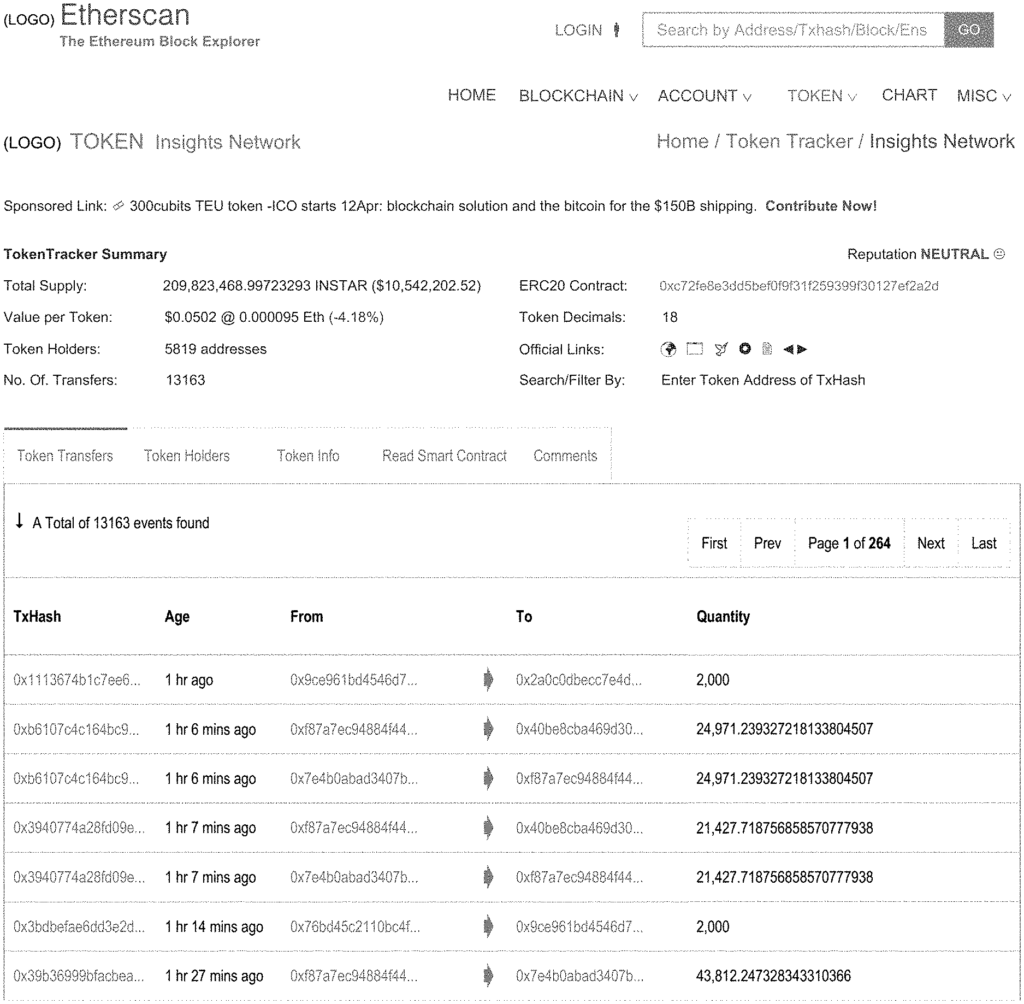
The Gemini IP LLC invention works as follows
The present invention is a method, a system and a program product that allows for the depositing, holding, and/or distribution of collateral in the form a stable-value token for a securities token. These tokens are all on the same blockchain. The present invention also relates to systems, program products, and methods for lending digital assets such as crypto currency, and other products related.
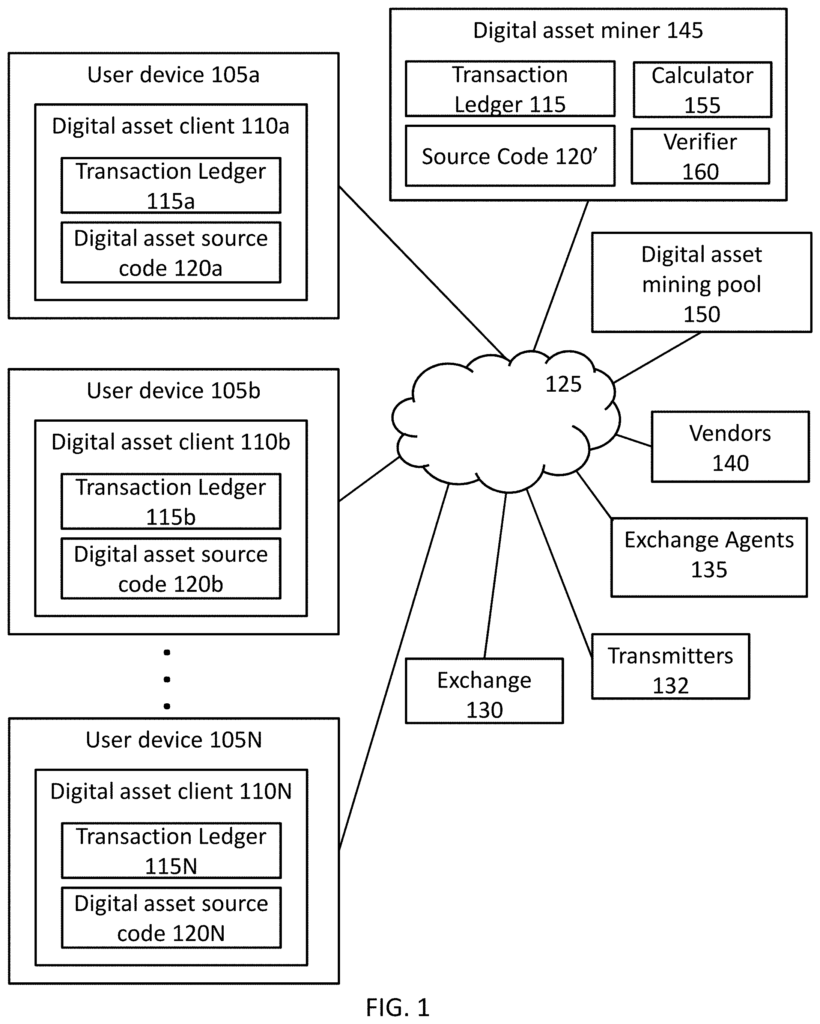
Background for Systems, methods and program products for storing, holding, and/or distributing digital assets as collateral in the form of a token on an underlying Blockchain
There is no technology solution to generate user-defined smart contracts, deposit, hold, and/or distribute collateral in the form a stable token for a security contract based on the smart contract user-defined, with the tokens on the same blockchain.
Capital markets traditionally work by channeling the savings that are typically held in bank accounts into investments, in exchange of interest on such capital used over a specified period of time at a fixed interest rate. Central authorities like the Federal Reserve for the U.S., or the Federal Reserve of the U.S., are responsible for government-backed fiat currencies like the U.S. The dollar is involved in the benchmark rates that banks can borrow or lend funds. These rates can vary depending on how long the funds will be lent or repaid.
The traditional banks no longer store digital assets due to the advent of crypto-currencies and digital assets. In the new paradigm, holders store digital assets in digital wallets, which are then tracked and maintained by a peer to peer blockchain. No central authority or bank is involved. Once value is stored into a digital asset it is removed from the economy. It is not available for investment, or to earn interest while it is securely stored in the digital wallet.
Digital assets and new blockchain technology present a challenge in terms of how to maintain the independence and security offered by peer to peer blockchain technologies while still allowing stored value to be invested to earn interest and to support capital market investment.
Another problem is that the current blockchain technology doesn’t provide a way to hold, deposit and/or distribute stable value digital assets as collateral for a security token based upon a smart contract defined by the user, on the same blockchain.
The present invention addresses the technological challenges currently existing in providing smart contracts that are user-defined based upon contract parameters provided by the user on blockchains, as well as allowing for the depositing, holding, and/or distribution of collateral in the form a stable token in exchange for a security token based on the smart contract.
The embodiments of this invention, as described herein, will address these and other objectives.
The present invention is a method, system, and software product for defining smart contract parameters by users on blockchains.
Bit
In embodiments, the method disclosed includes (a) receiving a contract proposal by an administrator system that is associated with an adminstrator of a smart security token contract. In some embodiments, a security token smart contract can be maintained on a public ledger of distributed transactions maintained by geographically dispersed computer systems via a peer to peer network. In some embodiments, the contract proposal contains: (i), first user information associated to a device associated with a user of the first user and (ii), first contract information containing at least these contract parameters: A) an initial date; B) an initial value; C) at lease one benchmark; D) a contract length; E) at most one collateral requirement; F) a notional amount of the smart contracts; and (G), first side information identifying a leg of the first contract. In some embodiments, the process continues by (b) the administrator system receiving at least one indication. In embodiments, at least one indication includes: (i), a first response from a device of a user associated with a user of a user of a user of a user of a user of a user of a user of a user of identifier of a contract’s second leg. In embodiments, method continues (c) by matching the first contract information with the first user response. In embodiments, method continues (d) by providing a smart contract for a stable token that is associated with stable tokens and with first smart contracts instructions for digital assets tokens associated with first smart contracts addresses associated with the blockchain of the digital asset. In some embodiments, first smart contract instructions for the digital asset are stored in the blockchain. They include (i) instructions on how to create stable value coins; (ii), instructions on how to transfer stable value coins; (iii), instructions on how destroy stable value coin; and (iv), instructions about functions related with the stable token. In embodiments, in order to continue the method, (e) the administrator system generates the security token smart contracts associated with security tokens and second smart contact instructions associated with second smart contract addresses associated with the blockchain of the underlying digital assets. In embodiments, the second smart contracts instructions are stored in the blockchain of the underlying digital assets and include (i) the first trade instruction for the security token smart contract. The first trade includes execution instructions to perform a first transaction between the user 1 and user 2, where the first transaction is based at least on: the contract proposal, and the user 2’s response. (iii), the fifth authorization instructions about transferring security tokens, (iii), the sixth authorization instructions about destroying security tokens, (iiiiiiiiiiiiiiiiiiiiiiiiiiiiii iiiiiiiiiiiiiiiiiiiiiiiiiiiii, (iiiiiiiiiiiiiiiiiiiiiiiiiii (ii In embodiments, method continues by (f) sending the security token smartcontract and second smartcontract instructions via the blockchain of the underlying digital assets to the second contract address. In some embodiments, the process may continue by (g) receiving a first amount as collateral via the second contract address. In some embodiments, a first amount is received by the second contract address as collateral. In embodiments, the first amount is stable value tokens that are associated with the user. In some embodiments, the method can continue by (h) receiving a second amount via the second contract address. In some embodiments, the second amount is a second value stable tokens that are associated with a second user. In embodiments, the second amount stable value tokens for the second user are based on at least one of the collateral requirements. In embodiments the first trade instructions for the digital asset are implemented by computer systems geographically distributed in the peer to peer network via the blockchain.
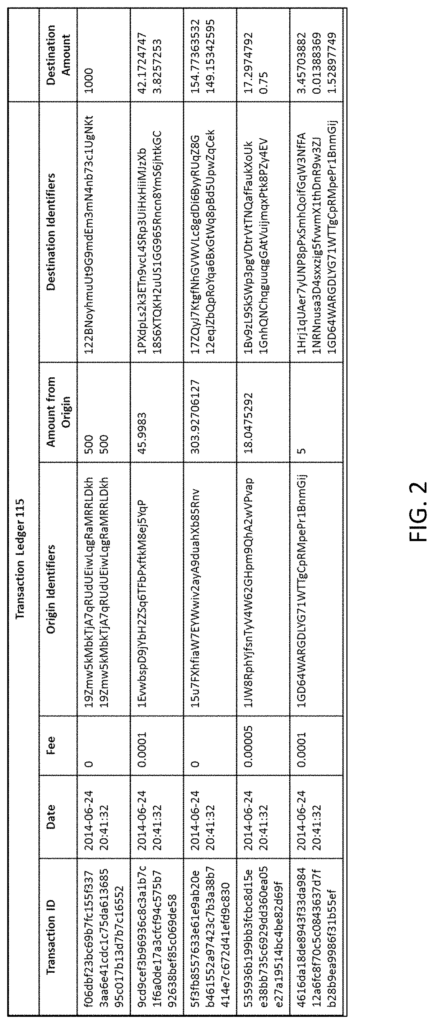
In embodiments, a message from the administrator system is sent via the blockchain to a second smart contract’s address. This results in the first trade instructions being implemented.
In embodiments the first information about the user further comprises a first public address of the user associated with the blockchain for the digital asset underlying the first information.” In embodiments, the first public user address corresponds with a first private key of the user that is mathematically related. In some embodiments, a second public address of the user is also included in the second information. This second address is associated with the blockchain for the digital asset. In embodiments, the second public user address corresponds with a second private key of the user that is mathematically linked to the second public user address.
In embodiments, receiving a collateral amount further includes sending a message from the user device to the smart contract associated with the blockchain. The first message contains a request for the transfer of the collateral amount from the user address to the smart contract.
In embodiments, the user device of the first user sends a message to the smart contract address of the security token requesting a transfer. In embodiments, via the underlying Blockchain, the administrator sends a message to the second address smart contract with instructions on how to request the transfer of the first amount from the user public address 2 to the smart contract 2. In embodiments, receiving a second sum of collateral also includes the sending by the second device, via the underlying Blockchain, of a fourth message containing a request for the transfer of the second amount from the user public to the smart contract addresses. In embodiments the second device sends to the first address of the smart contract a fifth message that includes authorization for the smart contract security token to request the transfer of the collateral via blockchain. The administrator system then sends to the address of the smart contract a sixth message with instructions for sending a request to transfer the collateral from the user public address of the user to the smart contract.
In embodiments the method includes: (i) recalculating a first collateral sum based upon the current benchmark data and at least one collateral requirement; (j), determining a second additional collateral sum based on any difference between the recalculated collateral first amount and the original collateral amount; and, (k), receiving the first additional amount at the address of the smart contract. In some embodiments, the first user device performs the recalculating. The recalculating step in embodiments is performed by an administrator system. This includes (i) creating, by the system, an alert that contains the first additional collateral; and (ii), sending the alert to the user device. The method may also include: “(l) monitoring by an administrator system the second contract addresses on the blockchain that are associated with the digital asset; (m), determining by the admin system whether the additional collateral is received by this second contract; (n), generating by the admin system a default notification if the administrator determines the additional collateral is not received; (o), sending by administrator the default notification to first user devices, second user devices and second smart contracts address.
In embodiments, “the method also includes (i), recalculating the collateral amount using the current benchmark data and at least one collateral requirement; (j), determining the second additional amount by comparing the recalculated collateral amount with the collateral amount; (k) receiving the second additional amount at the smart contract’s second address. In some embodiments, the second user device performs the recalculating. The recalculating step in embodiments is performed by an administrator system. This includes (i) creating, by the system, a notification to the user that includes the second collateral amount, (ii), sending the alert by the system to the user’s second device. The method may also include: “(l) monitoring by an administrator system the second contract on the blockchain that is associated with the digital asset; (m), determining by the admin system whether the additional collateral is received by this second contract; (n), generating by the admin system a default notification if the administrator determines the additional collateral is not received; (o), sending by administrator the default notification to first user device, second user device, and second smart contracts address.
The method includes the following: “In embodiments the method also includes (i) determining by the administrator, at the end the contract duration, an payout amount based at the least on the trade instructions of the first party; (j), generating payout instructions by the Administrator system based at the least on the side information of the first party and the side information of the second party; and (k), sending by the Administrator system the payout instruction to the second contract via the blockchain in order to provide the payout to either the first public address or the second public address of the public addresses of the public address to
In embodiments, collecting step includes: (l) sending, by the administrator, via the blockchain for the underlying digital asset, a ninth message including first requests for the security token to: (A) determine first excess collateral for the trade in accordance with the smart contract of the security token and the instructions from the user; (B), determine second excess collateral for the trade in accordance with the smart contract of the security coin and the instructions from the user; In embodiments, in the collecting step, (l) the administrator system sends, via the blockchain of the underlying digital assets, a ninth request for a security token that includes first requests to: (A), determine first excess for the trade according to the smart contract for security tokens and first trade instruction; (B), determine second surplus for the trade according to the smart contract for security tokens and first trading instructions; and (C), distribute the excess collateral from the trade to the user addresses.
In embodiments returning includes: (1) sending a tenth message including requests for the security token contract to: (A) determine first remaining collateral for the first trade in accordance with the security token smartcontract and the instructions of the initial trade; (B) determine second remaining collateral for the first trading in accordance with the security-token-smartcontract and the instructions of the initial trade; In embodiments, returning includes: (1) Sending a 10th message including requests to the security smart contract: (A), determine first remaining security for the trade according to the smart contract security and first trade instruction; (B), determine second remaining security for the trade according the smart contract security and first trade instruction; and (C), distribute the 1st remaining security for the trade according the smart contract security and first trade instruction.
In embodiments, the method also includes: (i). determining a benchmark value. The embodiments include: (1) sending a message from the second contract to the oracle at a third address, which is also associated with the blockchain of the digital asset. This message contains an eleventh message requesting first benchmark data; (2) receiving the benchmark data from the oracle; (3) executing instructions by the token to (A) save the benchmark information. In embodiments, when at least one of first excess and second surplus collaterals is greater that zero, the method includes: “(j) Calculating the first and second excesses collaterals for each user using the trade instructions and first benchmark information.
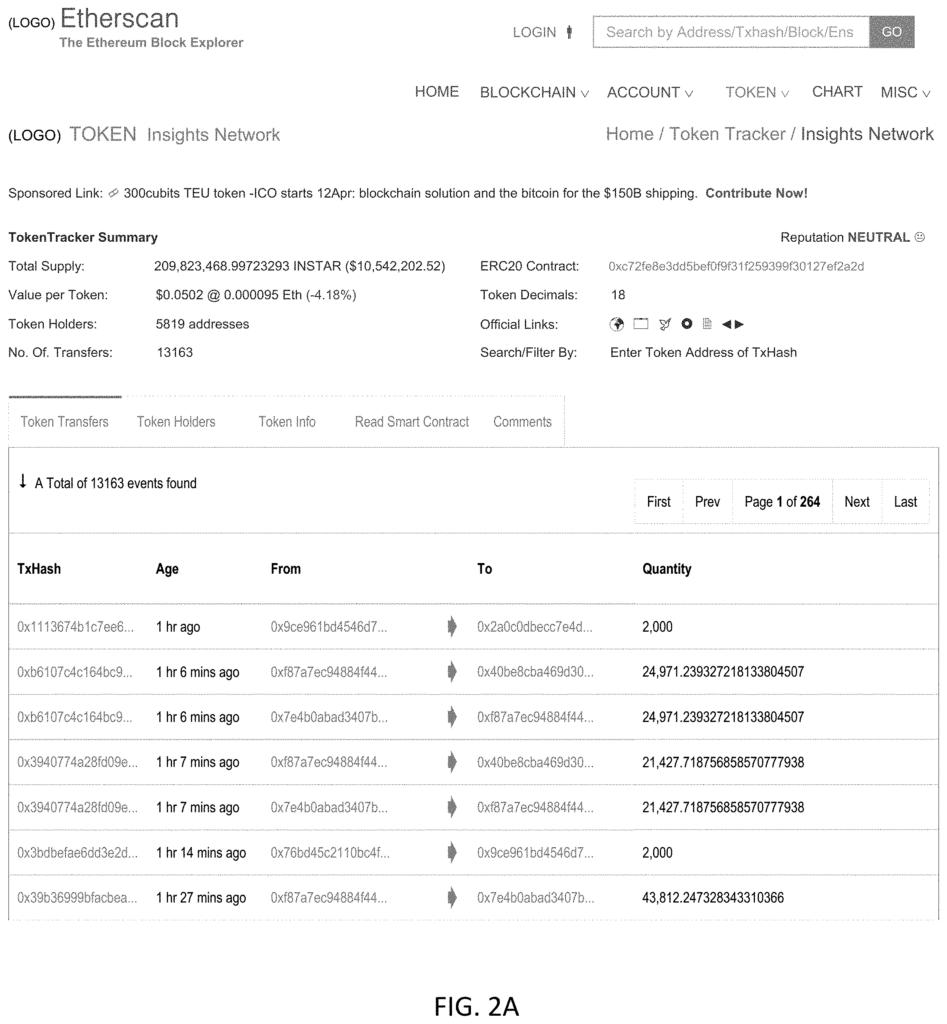
The administrator system can send the graphical interface information to the user device.
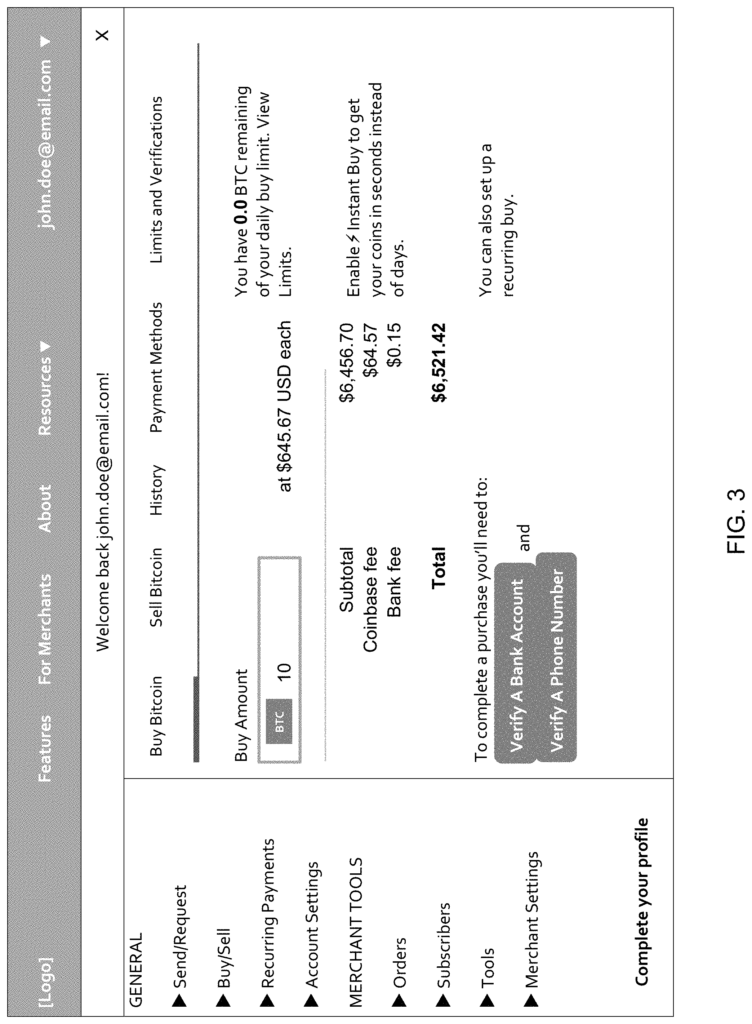
Click here to view the patent on Google Patents.
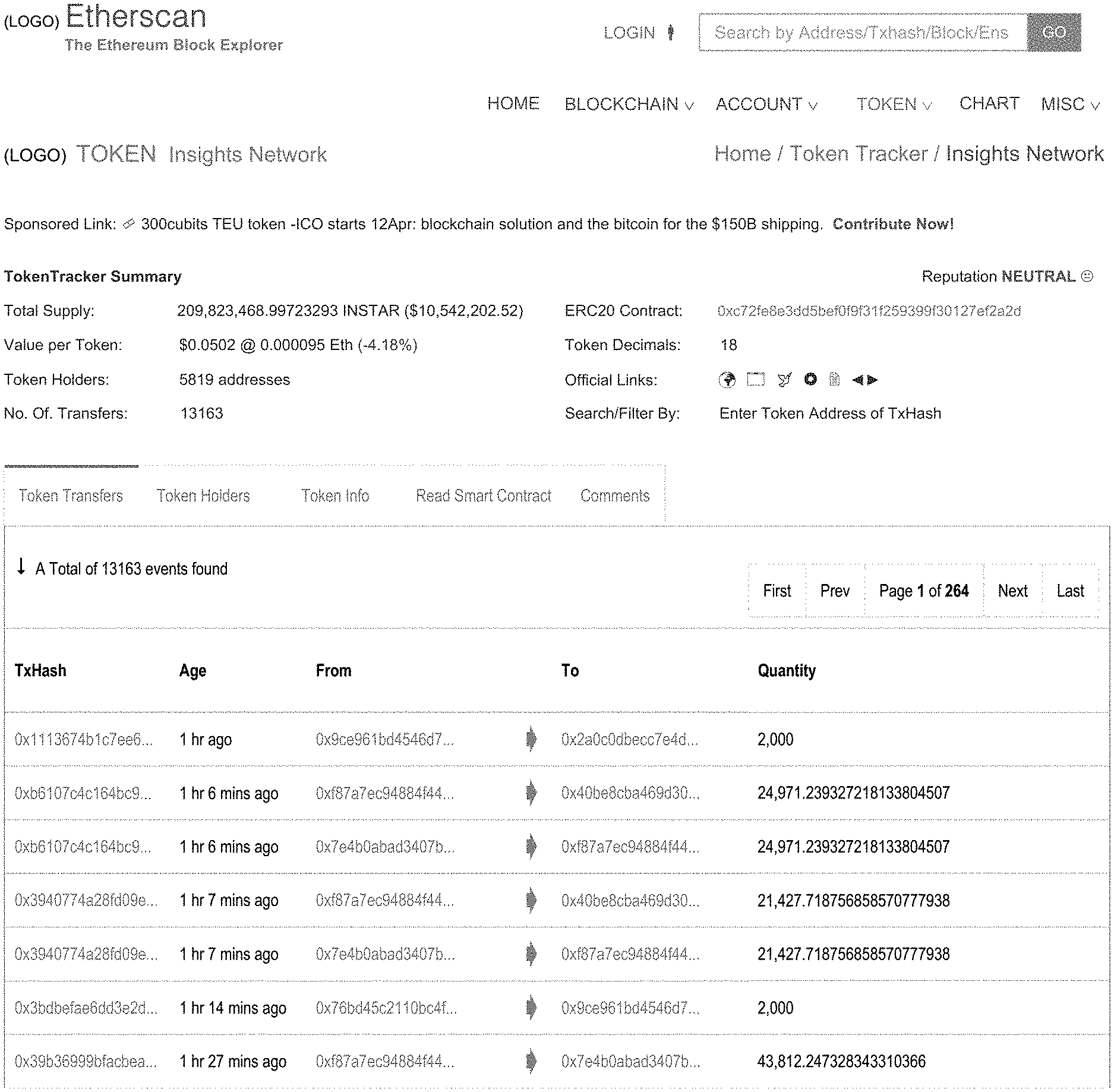
Leave a Reply